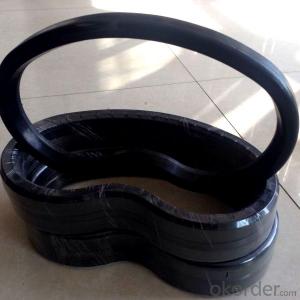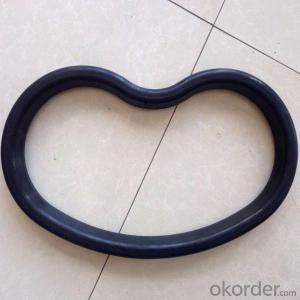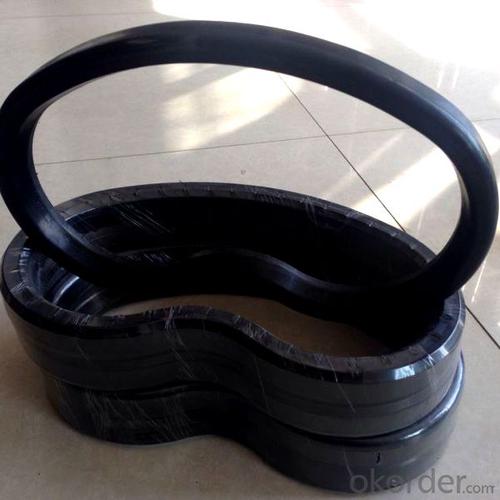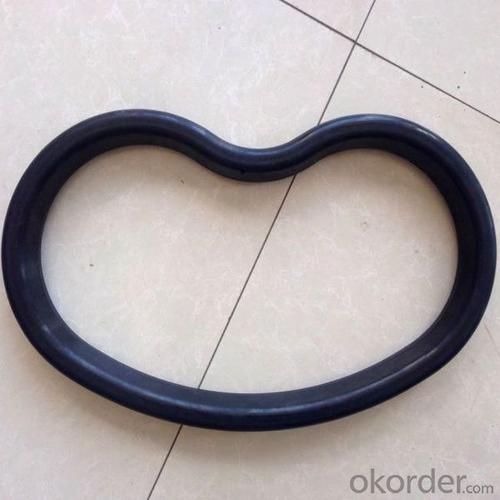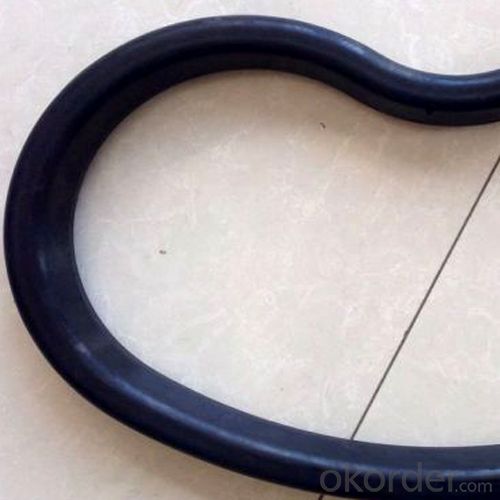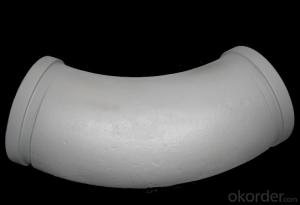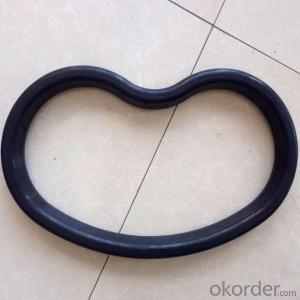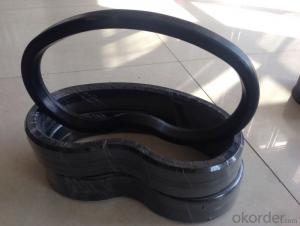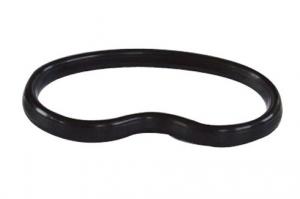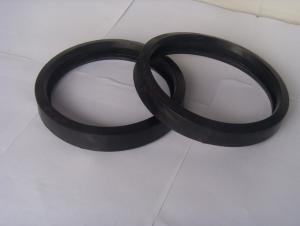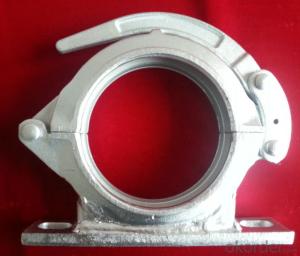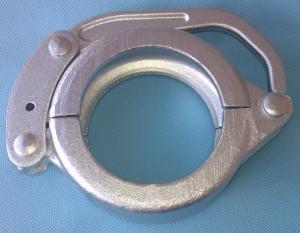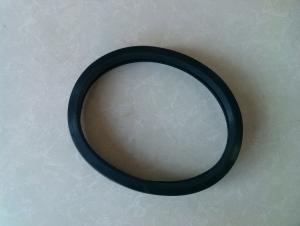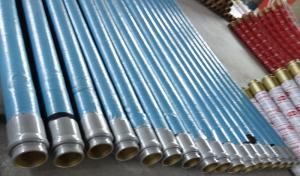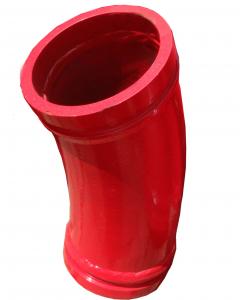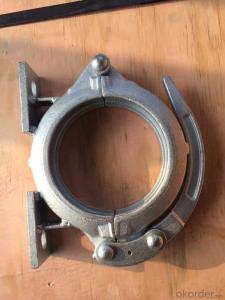Spare Parts For Concrete Pumps Rubber Kidney Seal Dn180
- Loading Port:
- Tianjin
- Payment Terms:
- TT OR LC
- Min Order Qty:
- 10 pc
- Supply Capability:
- 10000 pc/month
OKorder Service Pledge
OKorder Financial Service
You Might Also Like
Product Description:
Spare Parts For Concrete Pumps Rubber Kidney Seal Dn180 normally made by special rubber materials, NR rubber and other rubbers
to make sure the quanlity of seals , and also package in plywood box or cartons and put into container, it has a good performance and our customer are very happy with our Rubber Kidney Seal in past decade.
Scope of Application of the Goods
Spare Parts For Concrete Pumps Rubber Kidney Seal Dn180 is a concrete pumps parts for combined use with other concrete parts in for Schwing concrete pumps and truck pumps.
This seals can only be used in Schwing type concrete pumps and truck pumps as well, but not in any other pumps.
Product Advantages:
OKorder's Concrete Pumps Spare Parts Kidney Seal DN 180 Channels are durable, strong, and safety.
Specifications:
CNBM No.
3000031
Original No.
10140087
Description
Kidney Seal DN 180
Remark
FAQ:
Q1: How long about delivery time Concrete Pumps Spare Parts Kidney Seal DN 180 ?
A1: The delivery time will be very short, normally we keep the raw materials for old customers and sometime we also keep stock products to
make sure delivery time in any emergency cases.
Q2: How do we guarantee the quality of our Concrete Pumps Spare Parts Kidney Seal DN 180 ?
A2: We have established an advanced quality management system which conducts strict quality tests at every step, from raw materials to the final product. At the same time, we provide extensive follow-up service assurances as required.
Q3: How soon can we receive the product after purchase?
A3: Within three days of placing an order, we will book the vessel for goods. The specific shipping date is dependent upon international and government factors, but is typically 7 to 30 workdays.

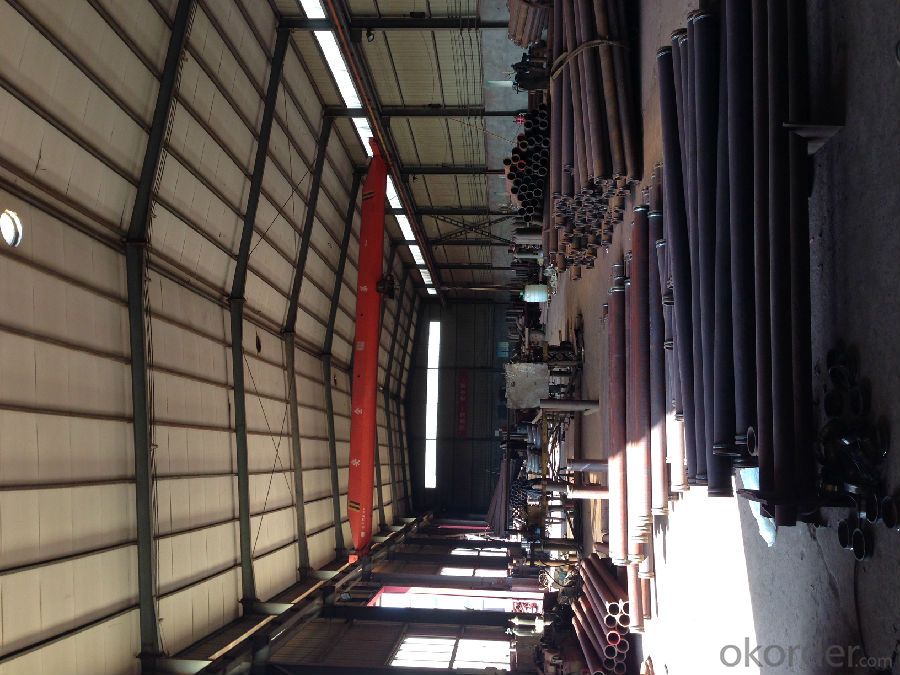
- Q: Are there any cost-effective alternatives to original concrete pump spare parts?
- Indeed, there exist cost-effective alternatives to the original spare parts for concrete pumps. One possibility is to contemplate acquiring aftermarket parts, which are frequently manufactured by third-party producers. These components are engineered to meet identical specifications and criteria as the original parts, yet they are commonly obtainable at a reduced price. Another avenue to explore is the acquisition of used or refurbished parts. These parts have previously been employed but have been refurbished to function flawlessly, presenting a more economical substitute for new parts. Nevertheless, it is crucial to verify that these alternatives are obtained from trustworthy suppliers to guarantee quality and compatibility with the particular model of your concrete pump.
- Q: Are there any specific guidelines for the disposal of hydraulic fluids used in concrete pump spare parts?
- Concrete pump spare parts require specific guidelines for disposing of the hydraulic fluids they use. Hydraulic fluids contain chemicals and contaminants that can harm the environment if not disposed of correctly. Here are some general guidelines to follow: 1. Research local regulations: Different regions have specific laws and regulations for disposing of hydraulic fluids. It's important to familiarize yourself with these rules to make sure you comply. 2. Prevent leaks: Properly contain the hydraulic fluid to avoid leaks or spills during transportation. Use containers designed for hazardous materials. 3. Avoid mixing fluids: Don't mix hydraulic fluids with other substances as it can complicate disposal and increase environmental damage. 4. Find a licensed disposal facility: Locate a licensed facility that handles hazardous waste disposal. These facilities have the equipment and expertise to handle hydraulic fluids safely. 5. Follow instructions: When delivering the hydraulic fluid to the disposal facility, follow their specific drop-off instructions. They may require specific labeling or documentation for proper handling. 6. Consider recycling options: Depending on the type of hydraulic fluid, recycling might be an option. Some facilities specialize in recycling hydraulic fluids, which is more environmentally friendly. 7. Educate staff: Make sure all personnel working with hydraulic fluids understand proper disposal procedures and their importance. By following these guidelines, you can safely and responsibly dispose of hydraulic fluids used in concrete pump spare parts, minimizing environmental harm and complying with regulations.
- Q: What are the different types of concrete pump hopper cylinders seals?
- There are several different types of concrete pump hopper cylinder seals, including piston seals, rod seals, wiper seals, and buffer seals.
- Q: What are the common signs of wear and tear on concrete pump spare parts?
- The specific signs of wear and tear on concrete pump spare parts can vary depending on the part in question. However, there are general indications that suggest when a concrete pump spare part is experiencing wear and tear. One indication is the presence of visible damage or deterioration on the surface of the part. This may manifest as cracks, chips, or dents on the outer layer of the spare part. These damages can occur due to regular usage, exposure to harsh environmental conditions, or accidental impact during operation. Another sign is an increase in vibration or noise during operation. If a concrete pump spare part is undergoing wear and tear, it may generate unusual vibrations or noises that were not evident when it was in good condition. This can signify internal damage or misalignment of the part, which can impact its overall performance and efficiency. Diminished performance or efficiency is also a common signal of wear and tear on concrete pump spare parts. If a part is experiencing wear and tear, it may not operate as efficiently as before, resulting in reduced pumping capacity, decreased flow rate, or inefficient operation. This can cause delays in construction projects and increased maintenance costs. Furthermore, an escalation in maintenance and repair requirements can indicate wear and tear on concrete pump spare parts. If a part needs more frequent repairs or replacements than usual, it may suggest that it is undergoing wear and tear. Regular inspections and maintenance can aid in early identification of potential issues and prevent further damage to the spare parts. In conclusion, signs of wear and tear on concrete pump spare parts can include visible damage, heightened vibration or noise during operation, diminished performance or efficiency, and increased maintenance demands. It is crucial to regularly inspect and maintain these spare parts to ensure optimal performance and prolong their lifespan.
- Q: How to diagnose the blockage in the inlet of concrete pump?
- If it doesn't work, you'll have to clean it up manually and rule it out.
- Q: Are there any specific regulations or standards for the labeling and packaging of concrete pump spare parts?
- Yes, there are specific regulations and standards for the labeling and packaging of concrete pump spare parts. These regulations ensure that the parts are properly identified, labeled, and packaged for safety, transportation, and ease of use. They may include requirements for clear identification of the part, its manufacturer, dimensions, and any necessary warnings or instructions. Additionally, packaging standards may specify the use of suitable materials to protect the spare parts from damage during shipping and storage.
- Q: What is the purpose of a concrete pump accumulator?
- The concrete pump accumulator serves the purpose of storing energy and ensuring a continuous and uniform flow of concrete while pumping. It acts as a intermediary between the pump and the delivery line, guaranteeing a smooth and uninterrupted delivery of concrete. The accumulator functions by compressing air or nitrogen, which is then utilized to propel the concrete through the pipeline when the pump is not actively operating. This aids in maintaining pressure and preventing any obstructions or irregularities in the flow of concrete. Additionally, the accumulator can reduce the wear and tear on the pump by absorbing pressure fluctuations and providing a more controlled and consistent flow of concrete. In summary, the concrete pump accumulator aims to enhance the efficiency, reliability, and performance of the pumping process.
- Q: How often should hydraulic cylinders be inspected or replaced in a concrete pump?
- Hydraulic cylinders in a concrete pump should be inspected regularly, ideally every 6 to 12 months, to ensure their proper functioning. Replacement of hydraulic cylinders should be done only when necessary, such as in cases of significant wear and tear, severe damage, or if they fail to meet safety standards.
- Q: What are the different types of concrete pump hoses?
- There are generally two types of concrete pump hoses: steel-reinforced hoses and fabric-reinforced hoses. Steel-reinforced hoses are stronger and more durable, suitable for high-pressure applications and long-distance pumping. Fabric-reinforced hoses are lightweight and flexible, ideal for smaller projects and shorter pumping distances.
- Q: How often should concrete pump S valves be inspected and replaced?
- Concrete pump S valves should be inspected regularly, ideally every 500 hours of operation or at least once a year. However, the replacement of S valves will depend on various factors such as the quality of the concrete being pumped, the frequency of use, and the overall condition of the valve. It is recommended to consult the manufacturer's guidelines and seek professional advice to determine the specific timing of S valve replacement.
Send your message to us
Spare Parts For Concrete Pumps Rubber Kidney Seal Dn180
- Loading Port:
- Tianjin
- Payment Terms:
- TT OR LC
- Min Order Qty:
- 10 pc
- Supply Capability:
- 10000 pc/month
OKorder Service Pledge
OKorder Financial Service
Similar products
Hot products
Hot Searches
Related keywords
